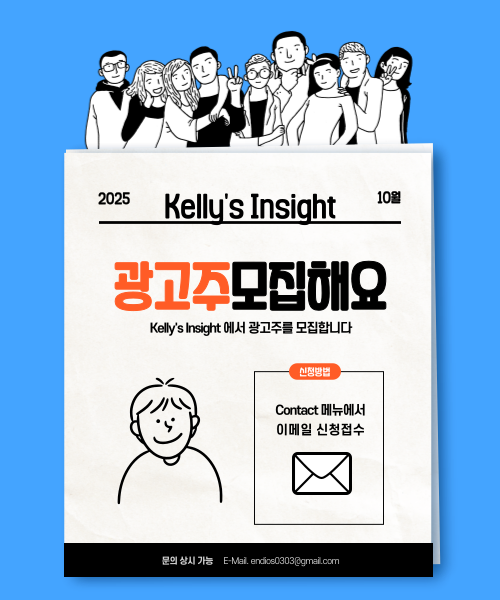For many Koreans, particularly those looking to establish roots in major urban centers like Seoul, the dream of homeownership feels increasingly distant. The nation’s housing market has become a perplexing paradox.
On one hand, the Bank of Korea has aggressively raised interest rates, theoretically making mortgages more expensive and cooling demand. On the other, apartment prices in core Seoul districts, after brief pauses, resume their upward trajectory, leaving economists and policymakers scratching their heads.
This isn’t just a market trend; it’s a societal challenge, profoundly impacting wealth inequality, birth rates, and political stability. Understanding this deep-seated resilience requires looking beyond simple economics into the unique structural, demographic, and psychological factors at play. Let’s unravel the complex web of reasons why Korea’s housing market refuses to cool down. 🇰🇷
The Perennial Problem: A Deep-Rooted Supply Shortage 🏗️
At the heart of Korea’s housing conundrum is a persistent and acute supply shortage, especially in the most desirable areas of the Seoul Metropolitan Area (SMA). This isn’t merely a lack of land; it’s a complex issue stemming from regulatory hurdles, urban planning challenges, and the inherent difficulty of developing in an already dense metropolis.
- Regulatory Bottlenecks and Slow Redevelopment: Building new apartments in Seoul isn’t as simple as acquiring land and breaking ground. Much of the new supply comes from redevelopment and reconstruction projects in older neighborhoods. These projects are notoriously slow, bogged down by intricate approval processes, disputes among existing residents, environmental reviews, and design regulations. Even with government initiatives to fast-track these, the typical timeline from planning to completion can easily stretch over a decade. This creates a significant lag between policy announcements of future supply and actual units hitting the market.
- Previous Policy Disincentives: In past attempts to curb speculation, several administrations implemented policies that inadvertently discouraged new housing construction. For instance, tightening regulations on developers, increasing development charges, or making it harder to secure construction financing, sometimes led to developers shelving projects or delaying starts. The cumulative effect of these policies over years has created a structural deficit that cannot be resolved overnight.
- Greenbelt Restrictions: While there are discussions about relaxing greenbelt regulations around Seoul, these environmentally protected zones were established to prevent urban sprawl and retain natural spaces. Opening them up is a contentious political issue. Until substantial portions are released for development, the core land supply within commuting distance of Seoul remains highly constrained.
- The “Not In My Backyard” (NIMBY) Phenomenon: Even when development is approved, local residents often oppose large-scale projects, citing concerns about traffic, noise, loss of views, and school overcrowding. This local opposition can lead to further delays, modifications, or even cancellations of crucial housing projects.
It’s crucial to understand that “Korea’s housing market” is not monolithic. While Seoul and its immediate satellite cities remain red-hot, many regional cities, facing declining populations and economic stagnation, are seeing stable or even declining prices. The demand is hyper-concentrated, making the capital’s issues uniquely persistent.
The Magnet Effect: Hyper-Concentrated Demand 🏘️
Even if more supply could magically appear tomorrow, it would likely be quickly absorbed due to an relentless and disproportionate demand for urban living, especially in Seoul.
- Centralization of Opportunity: South Korea is one of the most centralized nations in the developed world. The best jobs, particularly in high-paying sectors like IT, finance, and large conglomerates (chaebols), are predominantly in Seoul. Similarly, the top universities, healthcare facilities, and cultural amenities are concentrated in the capital region. This creates a powerful magnet effect, drawing young talent and ambitious families into the SMA, continuously replenishing and intensifying demand.
- Rise of Single-Person Households: Korea has one of the fastest-growing rates of single-person households globally, now accounting for nearly 40% of all households. These individuals often prefer compact, centrally located apartments or officetels that offer convenience and proximity to work and social life. This demographic shift sustains demand for smaller units, further tightening the overall supply in urban cores.
- Cultural Preference for Apartments (아파트, *apateu*): There’s a strong cultural preference for apartments, especially those in large complexes with good amenities, reputable construction brands, and proximity to desirable schools. These properties are perceived as safe investments and symbols of social status. This concentrated demand for a specific housing type further inflates prices within that segment.
- Psychological Investment Anchor: For many Koreans, real estate is not just a place to live; it is the primary, and often only, reliable path to wealth accumulation and a secure retirement. This deep-seated belief means that even amidst economic uncertainty or rising interest rates, people are reluctant to sell, and those with means are eager to buy, viewing property as the ultimate hedge against inflation and a foundational asset for generational wealth transfer.
The *Jeonse* Effect: A Unique Pressure Point 🔑
Korea’s unique *jeonse* system (a lump-sum, interest-free deposit rental system) plays a complex role. When home prices fall or interest rates rise, it can destabilize the *jeonse* market, leading to homeowners needing to repay larger deposits. This sometimes forces them to sell their property, contributing to downward pressure. However, when the housing market is perceived as strong, *jeonse* demand can act as a feeder to the purchase market, as large deposits represent significant savings that can be converted into down payments. The recent volatility in *jeonse* has made it harder for prospective buyers to save, creating a squeeze for first-time homeowners.
Policy Interventions and Market Resilience: A Test of Wills ⚔️
Successive South Korean governments have implemented numerous measures to tame the housing market, ranging from tax hikes on multiple homeownership to stringent lending restrictions. Yet, the market’s underlying resilience often blunts their full impact.
- Lending Restrictions: Policies like tightening Loan-to-Value (LTV) and Debt-to-Income (DTI) ratios, particularly in designated “speculative zones” within Seoul, aim to limit borrowing capacity and cool demand. While these measures can reduce transaction volumes and curb the most aggressive forms of speculation, they disproportionately affect first-time buyers and those with less existing equity, making it harder for them to enter the market. This often leaves wealthier cash buyers or those with significant collateral less impacted.
- Real Estate Taxes: Imposing heavier property taxes, capital gains taxes, and acquisition taxes on multiple homeowners is designed to disincentivize speculative investment. However, these taxes can sometimes be passed on to renters through higher *jeonse* or monthly rental fees, indirectly impacting aspiring homeowners. Moreover, in a strong market, owners might simply absorb the tax rather than sell, further limiting supply.
- Interest Rate Impact vs. Inflation Hedge: While higher interest rates raise the cost of borrowing and have indeed cooled some regional markets, Seoul’s market exhibits remarkable resilience. For many investors and homeowners, the long-term perceived value of a Seoul apartment as an inflation hedge and wealth preserver outweighs the short-term pain of higher loan repayments. The fear of missing out (FOMO) and the belief that prices will always eventually rise often trump immediate financial disincentives.
- Ineffective Decentralization Efforts: Efforts to decentralize economic activity and encourage population shifts to other regions have had limited success. Major public corporations and government agencies have been relocated, but the gravitational pull of Seoul’s private sector, cultural vibrancy, and educational opportunities remains overwhelmingly strong.
The Paradox of “Cooling” Measures 🧊
The central paradox is that many measures designed to cool the market often exacerbate the supply problem. For example, strict development regulations intended to prevent oversupply can lead to under-supply years later. Similarly, aggressive taxes on selling can discourage existing homeowners from listing their properties, further constricting the market. Without a fundamental shift in supply dynamics or a significant decentralization of opportunity, these policies tend to create temporary pauses rather than sustained declines in Seoul.
Korea’s Housing Market: Core Drivers
Frequently Asked Questions ❓
South Korea’s housing market, particularly in Seoul, is a fascinating case study of how deeply embedded structural, demographic, and psychological factors can defy conventional economic pressures. The interplay of restricted supply, concentrated demand, and the cultural perception of housing as an indispensable asset creates a market that is uniquely robust and resistant to cooling. While policymakers continue to grapple with this challenge, for millions of Koreans, the quest for an affordable home remains one of the most pressing issues of our time.
What are your thoughts on Korea’s unique housing situation? Share your perspectives in the comments below! 👇









Leave a Reply